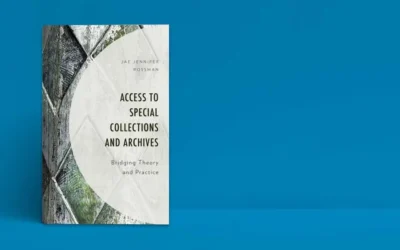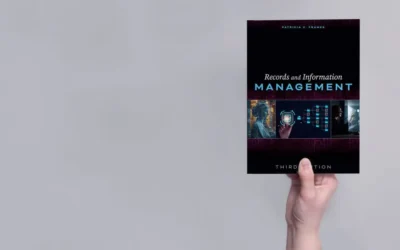How to Apply Adult Learning Theory in Special Libraries Part 2
Lauren Hays
As a reminder they are:
- The role of the learner’s experience
Adults come into an educational activity with both a greater volume and a different quality of experience from that of youths.
- Readiness to learn
Adults become ready to learn those things they need to know and be able to do in order to cope effectively with their real-life situations.
- Orientation to learning
In contrast to children’s and youths’ subject-centered orientation to learning (at least in school), adults are life-centered (or task-centered or problem-centered) in their orientation to learning.
- Motivation
Adults are responsive to some external motivators (better jobs, promotions, higher salaries, and the like), but the most potent motivators are internal pressures (the desire for increased job satisfaction, self-esteem, quality of life, and the like). (Knowles, Holton, & Swanson, 2011, pp. 63-67)
Application of Andragogy in Special Libraries
When reading about the third assumption—the role of the learner’s experience—it seemed so obvious, but it was not something I had considered. Adults have many prior experiences. These prior experiences can hinder or assist their interactions with me. Depending on their previous encounters with librarians, or the library as an institution, they may have positive or negative reactions to working with me. Therefore, I realized I could not take all interactions personally. Instead, I needed to do my best work and create positive working relationships based on my own merits. Each encounter was an opportunity for me to change negative perceptions and reinforce positive feelings about libraries.
One thing to note as it relates to the third assumption, is that many library users may have prior experience with a school, public, or academic library. These experiences may cause them to make inaccurate assumptions about the workings of a special library. It is important to be clear on your library’s policies and explain why they exist. If clear explanations are not given, users of special libraries may be frustrated because the policies do not align with their previous experiences in libraries.
For me, the fourth and fifth assumptions—readiness to learn and an orientation to learning—changed the way I gave explanations. This change primarily occurred in presentations to new hires, but worked anytime I explained a resource or tool. Too often, my explanations were theoretical in nature. For example, I would say, “If you want to do this…” or “One person who does this used this resource…” These scenarios worked when the library user wanted to do those things. However, when the user could not see a real-life application for themselves, they quickly tuned out. Therefore, based on these two assumptions, I changed my approach and started asking library users questions about their job responsibilities and what tasks they were trying to accomplish. Once I knew more about their needs, I tailored my explanations of the tools and resources to their job responsibilities.
The sixth assumption—motivation—was one that did not quickly cause a change in my interactions with library users. At first, I did not see how any of my interactions with library users were going to impact their motivation. However, once I became more comfortable incorporating strategies from the first five assumptions of how adults learn, I decided to revisit the sixth. Upon further reflection, I realized I could recast the library as a resource to help make employees’ jobs easier—thus making their lives better. This was a particularly useful strategy when presenting to new hires.
Conclusion
When education became an important part of my job responsibilities, learning how I could better instruct adults improved many of my interactions with library users. These improved interactions led to the library being seen in a more positive light. Our library did not have a negative reputation; however, as with anything, there is always room for improvement. Discovering and applying the adult learning theory of Andragogy helped me facilitate more productive interchanges with all library users whether they were new hires, established members of my organization, or external constituents.
References
Knowles, M. S., Holton, E. F., & Swanson, R. A. (2011). The adult learner: The definitive classic in adult education and human resource development (7th ed.). Amsterdam: Elsevier.
Lauren Hays
Lauren Hays, PhD, is an Assistant Professor of Instructional Technology at the University of Central Missouri. Previously, she worked as an Instructional and Research Librarian at a private college in the Kansas City metro-area. Prior to working in higher education, she was employed by the National Archives and Records Administration and worked as an intern at the Harry S. Truman Presidential Library & Museum. Please read Lauren’s skills for special librarians, and you may want to take a look at Lucidea’s powerful ILS, SydneyEnterprise.
Similar Posts
Texas Archive of the Moving Image: Interview with the Digital Archivist
I recently interviewed Grace Muñoz about her work at the Texas Archive of the Moving Image. Her work on improving the discoverability of the multimedia collection is fascinating.
Interview with Author and Librarian Dr. Jae Rossman on Special Collections and Archives
Dr. Jae Rossman wrote Access to Special Collections and Archives, available now from Rowman and Littlefield. The book is an excellent resource for special librarians who work with special collections and archival materials.
Interview with the Author: Dr. Patricia Franks on Records and Information Management
Dr. Patricia Franks is the author of Records and Information Management, now with an upcoming third edition to be published by ALA Neal-Shuman in the spring of 2025. My interview with her follows.
Are There Drawbacks to Using GenAI for Research?
Researchers must take responsibility for understanding how GenAI works and closely review literature search results before relying on them. Let’s take a look at three major drawbacks for researchers and special librarians to consider when leveraging or recommending GenAI platforms.




Leave a Comment
Comments are reviewed and must adhere to our comments policy.
0 Comments